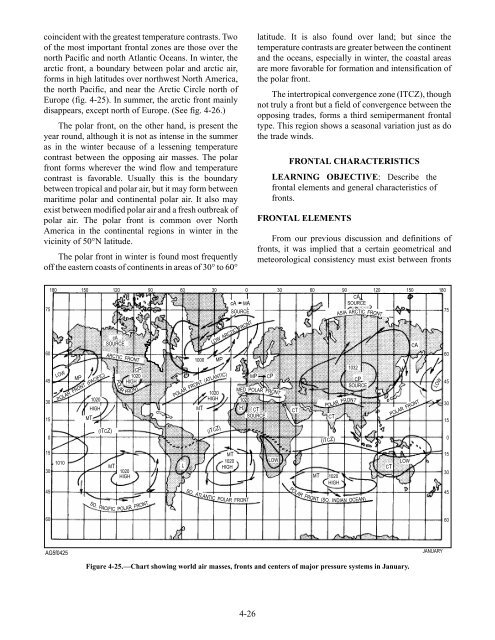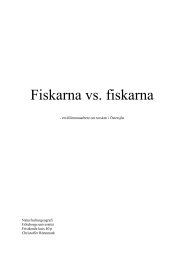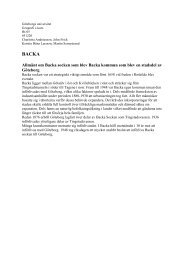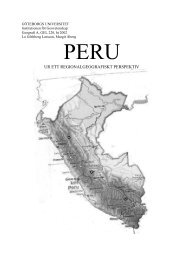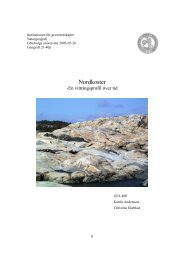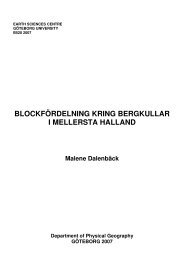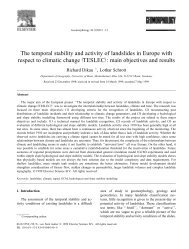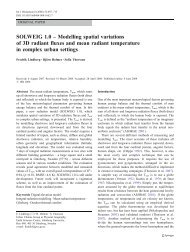AIR MASSES AND FRONTS
AIR MASSES AND FRONTS
AIR MASSES AND FRONTS
Create successful ePaper yourself
Turn your PDF publications into a flip-book with our unique Google optimized e-Paper software.
coincident with the greatest temperature contrasts. Two<br />
of the most important frontal zones are those over the<br />
north Pacific and north Atlantic Oceans. In winter, the<br />
arctic front, a boundary between polar and arctic air,<br />
forms in high latitudes over northwest North America,<br />
the north Pacific, and near the Arctic Circle north of<br />
Europe (fig. 4-25). In summer, the arctic front mainly<br />
disappears, except north of Europe. (See fig. 4-26.)<br />
The polar front, on the other hand, is present the<br />
year round, although it is not as intense in the summer<br />
as in the winter because of a lessening temperature<br />
contrast between the opposing air masses. The polar<br />
front forms wherever the wind flow and temperature<br />
contrast is favorable. Usually this is the boundary<br />
between tropical and polar air, but it may form between<br />
maritime polar and continental polar air. It also may<br />
exist between modified polar air and a fresh outbreak of<br />
polar air. The polar front is common over North<br />
America in the continental regions in winter in the<br />
vicinity of 50°N latitude.<br />
The polar front in winter is found most frequently<br />
off the eastern coasts of continents in areas of 30° to 60°<br />
75<br />
60<br />
45<br />
30<br />
15<br />
0<br />
15<br />
30<br />
45<br />
60<br />
LOW<br />
1010<br />
MP<br />
1020<br />
HIGH<br />
MT<br />
cA<br />
SOURCE<br />
(ITCZ) ARCTIC FRONT<br />
MT<br />
CP<br />
1020<br />
HIGH<br />
POLAR FRONT<br />
1020<br />
HIGH<br />
1000 MP<br />
1020<br />
HIGH<br />
MT<br />
POLAR FRONT (ATLANTIC)<br />
L<br />
(I C<br />
cA MA<br />
SOURCE<br />
LOW ARCTIC FRONT<br />
T Z)<br />
MT<br />
1020<br />
HIGH<br />
SO. PACIFIC POLAR FRONT SO. ATLANTIC POLAR FRONT<br />
4-26<br />
latitude. It is also found over land; but since the<br />
temperature contrasts are greater between the continent<br />
and the oceans, especially in winter, the coastal areas<br />
are more favorable for formation and intensification of<br />
the polar front.<br />
The intertropical convergence zone (ITCZ), though<br />
not truly a front but a field of convergence between the<br />
opposing trades, forms a third semipermanent frontal<br />
type. This region shows a seasonal variation just as do<br />
the trade winds.<br />
FRONTAL CHARACTERISTICS<br />
LEARNING OBJECTIVE: Describe the<br />
frontal elements and general characteristics of<br />
fronts.<br />
FRONTAL ELEMENTS<br />
From our previous discussion and definitions of<br />
fronts, it was implied that a certain geometrical and<br />
meteorological consistency must exist between fronts<br />
180 150 120 90 60 30 0 30 60 90 120 150 180<br />
AG5f0425<br />
POLAR FRONT (PACIFIC)<br />
MP CP<br />
MED POLAR FRONT<br />
1020<br />
H CT<br />
SOURCE<br />
CT<br />
LOW<br />
MT<br />
POLAR FRONT<br />
CT<br />
(ITCZ)<br />
POLAR FRONT (SO.<br />
1020<br />
HIGH<br />
CA<br />
SOURCE<br />
ASIA ARCTIC FRONT<br />
1032<br />
CP<br />
SOURCE<br />
INDIAN OCEAN)<br />
CT<br />
POLAR FRONT<br />
Figure 4-25.—Chart showing world air masses, fronts and centers of major pressure systems in January.<br />
LOW<br />
CA<br />
LOW<br />
JANUARY<br />
75<br />
60<br />
45<br />
30<br />
15<br />
0<br />
15<br />
30<br />
45<br />
60


